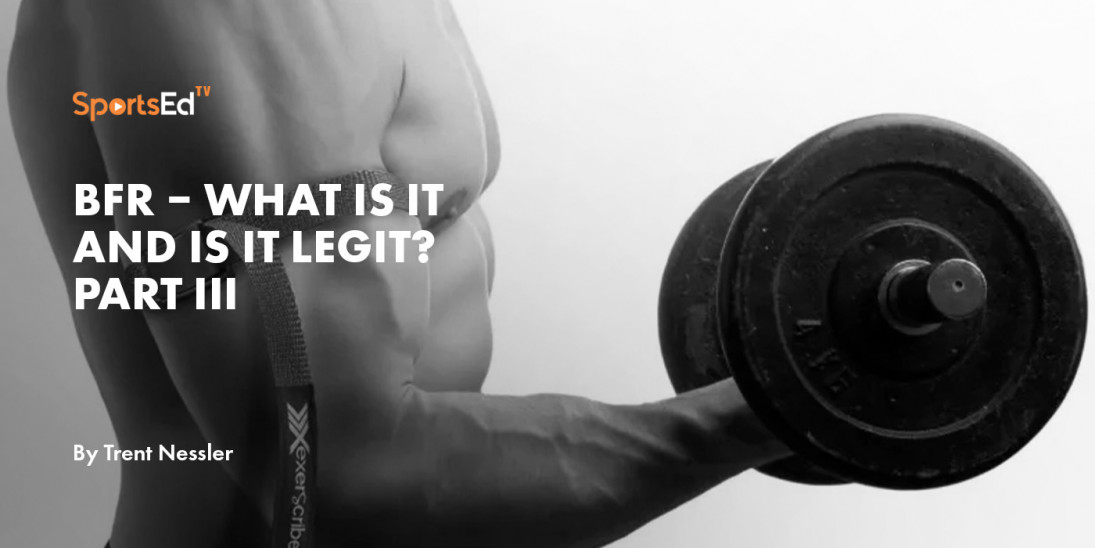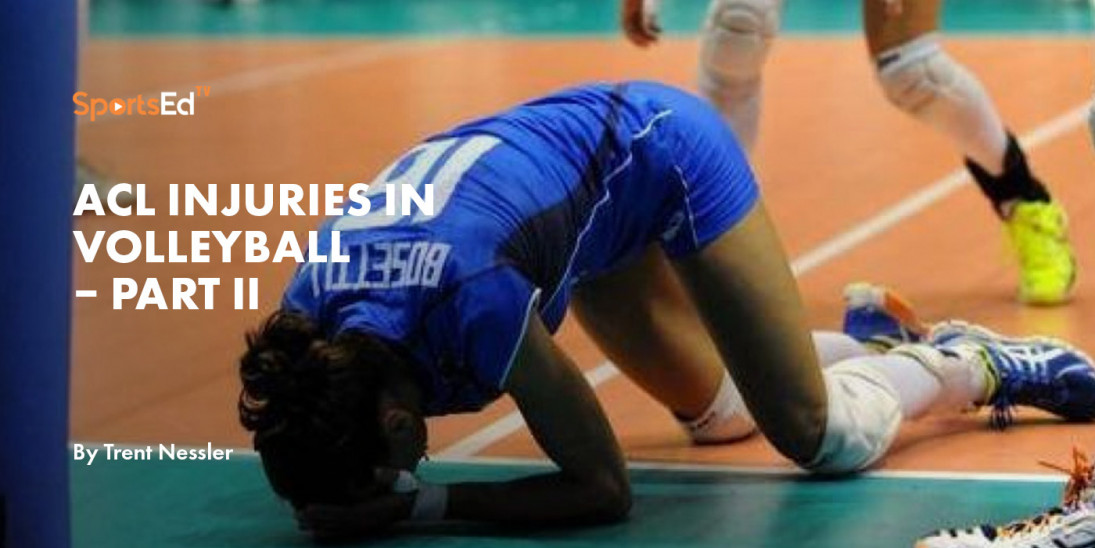Health
Welcome and thanks for visiting...

Shoulder Injuries in Sports
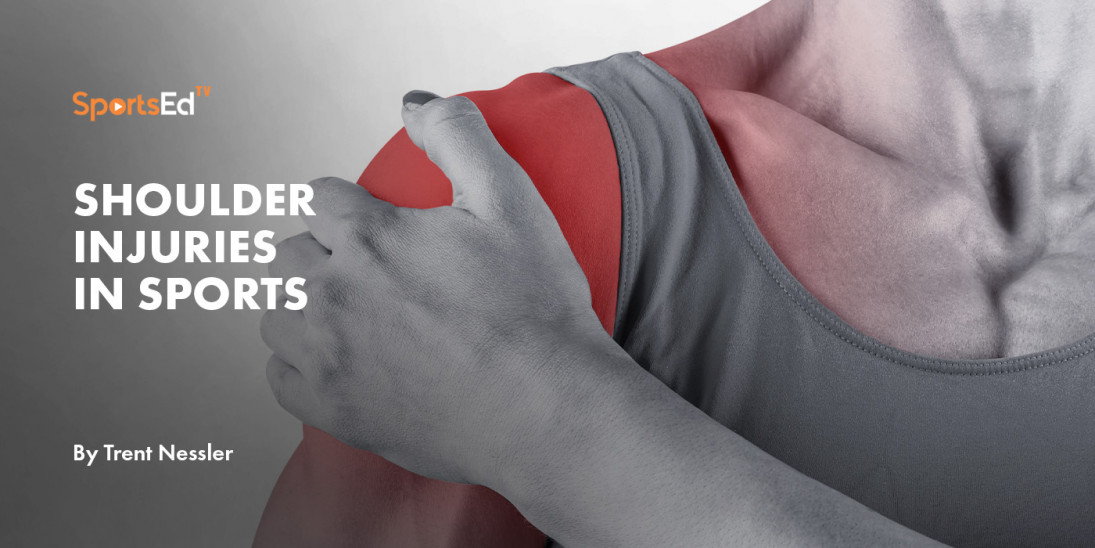
Shoulder injuries are common, especially in overhead athletes (tennis, volleyball, baseball, etc.). This is partly due to the continuous range of motion the shoulder is put through with these sports, as well as the shoulder being an inherently unstable joint due to the architecture of the joint itself. Unlike the hip joint, a ball and socket joint, which has its stability provided by its bony structures, the shoulder relies primarily on the muscles and ligaments that surround it to provide its stability. As a result, it is more susceptible to injury, especially when someone is cranking it to its end range of motion multiple times during a game or match. Because there is no bone there to stop the motion, the muscles and ligaments are the only restraint and thus are easily injured.
There are a lot of shoulder injuries that we see in sports, but for the purposes of our discussion, we will stick with the most common structures that are involved in the injuries we see most frequently. We are not talking about specific injuries but rather the structures that are injured, as this will provide us with a greater understanding.
The shoulder is primarily composed of the following bones: the humerus (upper long arm bone), the scapula (shoulder blade), the clavicle (collar bone), and the rib cage. Although fractures do happen, it is more common to see injuries to the ligamentous and muscular tissues. As such, it is worth identifying these structures, what they are, and what they do.
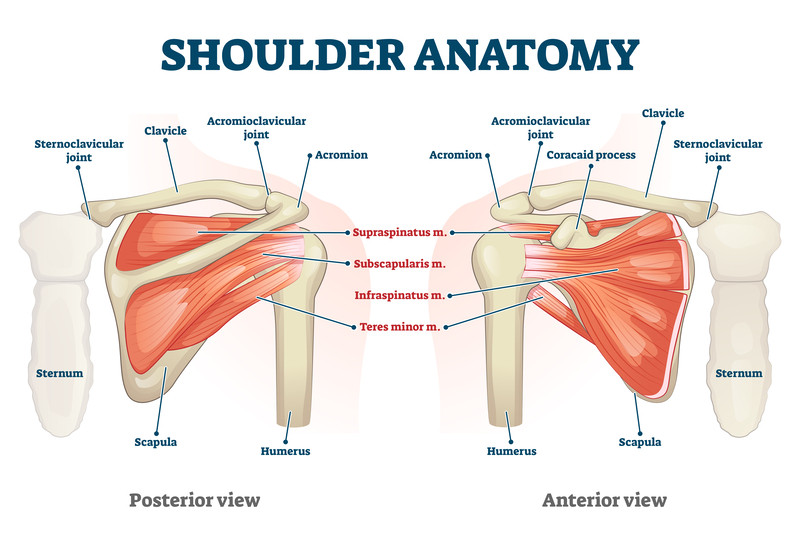
Rotator Cuff - the rotator cuff is a group of 4 muscles of the shoulder that provide stability to the shoulder. The supraspinatus, infraspinatus, subscapularis, and teres minor (pictured above). These muscles originate on the scapula and attach to the humerus. They hold the humerus firmly in the glenoid fossa (shoulder joint) so that you can move your arm around without having the humerus move in and out of the joint. Injury to these muscles can cause pain, decrease of motion, loss of function, and/or excessive movement of the humerus within the shoulder joint. The muscle most commonly injured (>85% of the time) is the supraspinatus.
Labrum is the circular tissue depicted in the picture above, and the humeral head is seated right inside that cup. The labrum provides a cushion between the humerus and the glenoid fossa and also provides stability to the shoulder. The way the humeral head is seated in the labrum in addition to the glenoid and capsule, allows the labrum to provide stability to the shoulder. Injury to this structure can sometimes lead to instability in the shoulder, anterior shoulder pain, or pain with resistance to the biceps.
Biceps tendon - the long head of the biceps runs in the grove in the humerus (pictured above) and attaches to the superior (upper) portion of the labrum. Injury to this tendon and/or rupture of this tendon can often lead to an injury of the labrum (tear of the labrum). The rupture of this tendon is easily identified due to intense pain and balling up of the biceps muscle. Due to the stabilizing function depression function of the biceps in the shoulder, this can also lead to rotator cuff problems.
AC joint - the acromioclavicular (AC) joint is the joint between the clavical and the acromion (pictured above). This joint is held together via ligaments. This joint can become a source of pain if swollen or if separated. All AC separations are not created equal. AC separations are classified on a grading scale. The higher the grade of AC separation, the more painful this becomes and the greater the impact on the function of the shoulder.
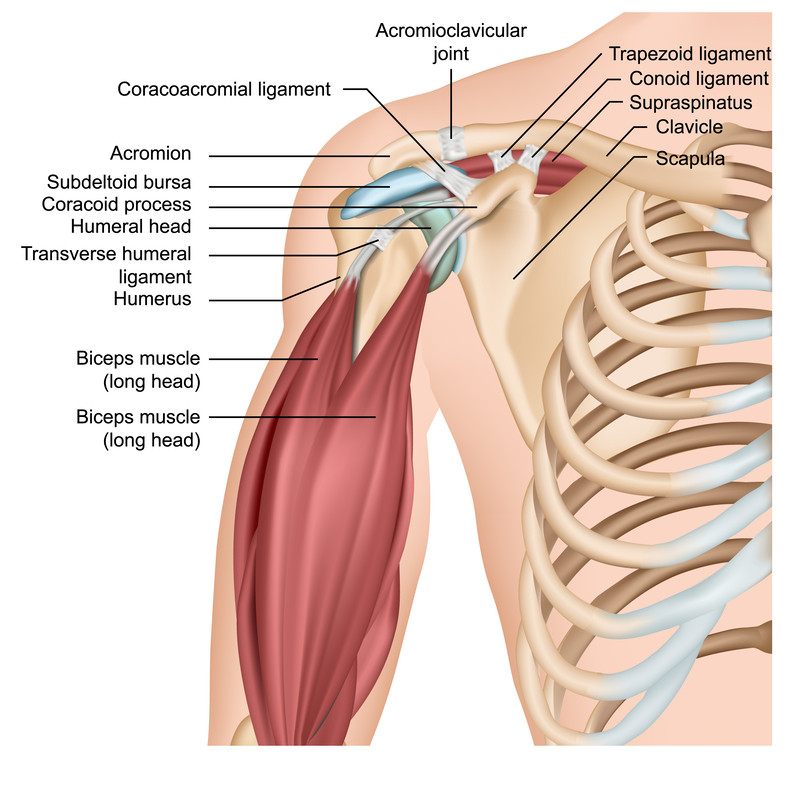
costovertebral joint - the costovertebral joint is where the individual ribs attach to the spine. One of the most common misdiagnoses in athletes is a muscle strain. The typical presentation is a movement that causes sudden and severe pain around the shoulder blade or just below the spine. It is a pinpoint tenderness and can be intense. What happens is the rib pops out of place at this joint, the costovertebral joint (located in the back - pictured to the right). In this injury, you will have a lot of pain with deep breathing, coughing, and sneezing localized to the joint involved in the back.
Brachial Plexus – on the anterior or front side of the shoulder is a complex of nerves called the brachial plexus. These nerves come off the cervical spine (neck) and innervate (allow you to feel and move) the upper extremity. Injury to this plexus can come from shoulder dislocations or subluxations (shoulder popping out) or a rapid stretch to the upper extremity (a football player goes to grab the opponent and gets arm stretched out and back – often referred to as a stinger). Brachial plexus injuries are easy to identify as they often lead to loss of sensation and strength in the upper extremity.
Sometimes, a shoulder injury is confused with a cervical neck injury. So, in the instance of a shoulder injury, it is always good practice to rule out a cervical issue.

